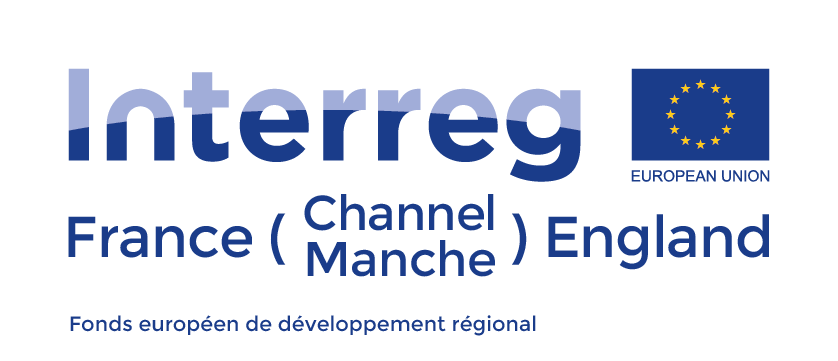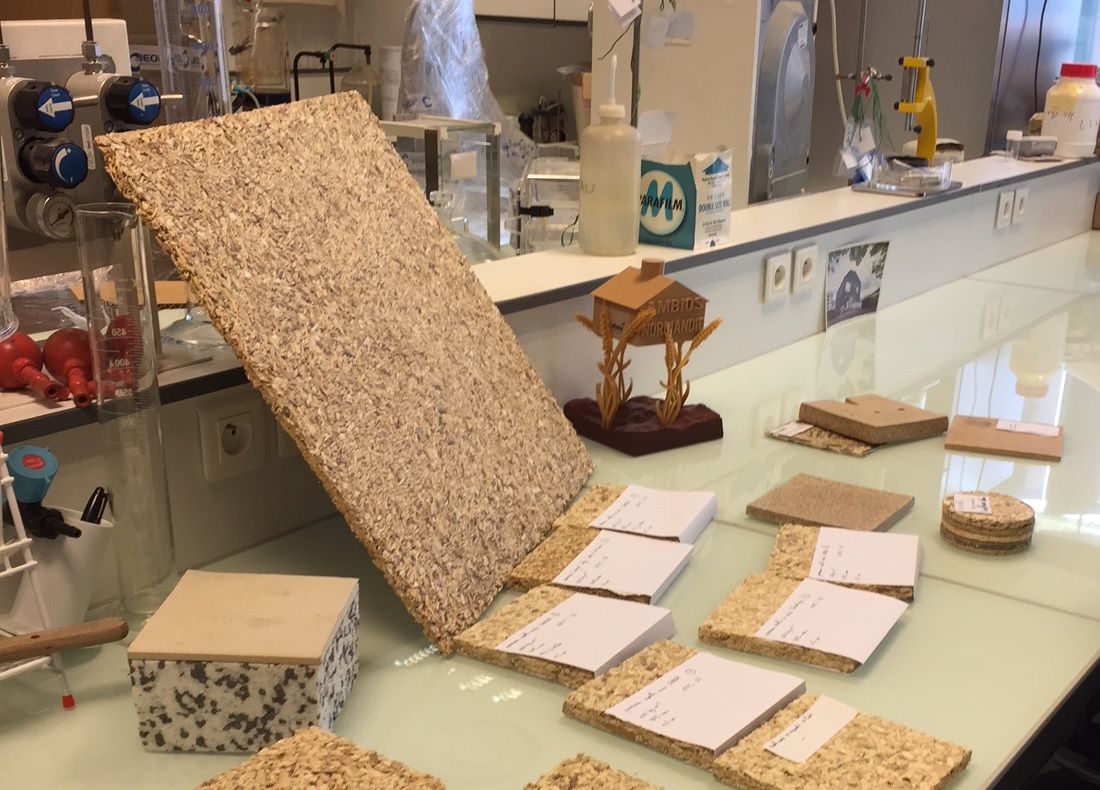UniLaSalle develop prototype from corn and rapeseed ‘marrow’
Create a subpage- Sylvain Bosquet
- /
- the 10-07-2018
- / 1635
The SB&WRC project is supported by the European program Interreg VA France (Channel) England and receives financial support from the ERDF.
What are the characteristics of your SB&WRC prototype?
The objective of our prototype is to allow the valorization of agricultural co-products, focussing on the elements of plants that are currently unused. The crops targeted for the development of this prototype are rapeseed, corn and wheat. These crops are abundant in the geographical area of the project. The key characteristics that the selected materials must possess are that they are lightweight and have a good insulating capacity. This is why we chose the marrow, a spongy part found inside the stalks of corn and rapeseed to develop our prototype insulation panel.
What are the challenges posed by this material?
This type of particleboard is made by thermocompression, with the addition of a synthetic glue to bind the particles together which in turn decreases the insulating nature of the panel. The challenge for the development of our material is to preserve the intrinsic properties of the material by adding the least amount of natural binder required, while ensuring that the panel has sufficient mechanical strength.
The right choice of material is also a challenge. The marrow is only one part of the stem and it is necessary to choose a particular marrow type that can be easily separated from the rest of the rod on an industrial scale. This choice is particularly difficult when it is a sector in development and the industrial machinery required to manufacture at scale does not yet exist.
What tests are UniLasalle conducting on agricultural co-products?
We have studied the selected co-product from every angle to establish a real identity card! We determine its biochemical composition, density, and granulometry. We then test its thermal stability, its ability to absorb liquid water and water vapor, and its biodegradability. Finally, we seek to observe its structural composition and its porosity. Conducting this analysis of the co-product allows us to select the most appropriate material to use and identify the most suitable application.
What equipment does UniLasalle have in its laboratory?
We have a range of equipment which allows us to develop and process materials (grinders, mixers, press, extruders) as well as equipment allowing the testing of their characterizations (thermal tests, mechanical tests, humidity sensitivity tests, fire resistance tests, tests biodegradation, ecotoxicity tests). The main benefit of having all this equipment is that it allows us to directly test the materials we have developed in-house.
Will UniLasalle conduct tests on the other project partners’ prototypes?
As part of the SB&WRC project, we will carry out fire tests and biodegradation tests for all three prototypes.

